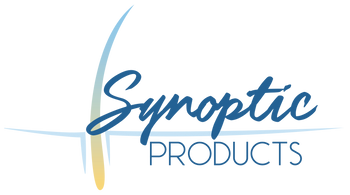How Beyond Electrology Basics Was Born

One afternoon before the pandemic, I shared a cup of coffee with an electrologist and Elizabeth Asch, the owner of Ballet Sterile Disposable Needles. We were talking about how there is no resource for allies and medical providers to learn the body of information that is now known on guiding transgender individuals through electrolysis. While we were having this conversation, Elizabeth suggested we write a book about the topic. The electrologist and I looked at each other and both said out loud, “that’s a great idea!” After further discussion, that particular electrologist decided it wasn’t the right time for her to participate, but the idea had taken hold in my mind.
After thinking for a few months about how to put together a book on electrolysis for the transgender care community, I realized that, while that information would be useful, there were many other advanced topics in electrolysis equally useful that aren’t included in the basic textbooks. Beginning my work toward what has now become Beyond Electrolysis Basics, I started contacting expert electrologists who I knew well, many of whom were also electrology school educators. I also sought the advice of a professional book publisher to get advice on how to structure the book in a way that would be legally compliant and easy to organize. The advice of this professional in the book industry was invaluable in helping me to get the book project started.
How the Idea Took Hold
The more I spoke with authors about the topics to include, the more I realized how much had changed during the last 50 years - and even more so in the last 20 years. The most recent basic textbook had come out in the early 2010s, and there were no books at all on the more advanced topics. I realized that there was a true need for this type of book, and that new and experienced electrologists would appreciate such a text. And, once I started speaking with the other authors about the topics to include, it became clear that that these were relevant topics that electrologists could really learn from since the knowledge was being shared via conferences and seminars only, methods of information dissemination that don’t necessarily reach all electrologists.
Getting started
Choosing Collaborators
Some collaborators were chosen based on who I’d seen presenting cutting-edge information in seminars and conferences I had been attending. Other collaborators were electrolysis professionals that are recognized in the U.S. as trusted electrologists and business owners. I needed folks who would take the job of providing information for a book very seriously and put in the needed work to make this publication happen. The time commitment that we ended up needing from the collaborators was substantial, and even though we didn’t know how big it would actually end up being, I knew I needed committed partners in this project who would put the time aside to work with us.
Choosing Topics
The chosen topics were ones that activated curiosity and interest among electrologists. The goal of the book was to answer complex questions related to modern electrolysis that many in the industry either didn’t know about due to their own background, or wanted to learn about in order to expand their practice. Additionally, topics were included where there was little or no literature available in other publications. As discussions with various electrologists progressed, I realized it made sense for the topics this book would focus on to be more advanced issues than those offered in a basic, beginner’s textbook. As a result, basic topics are referenced and briefly included but only make up a small portion of the book.
Dead Ends and Competing Needs
After defining the scope of the book, we put together a writing plan, and then the writing moved forward seamlessly… or at least, that was the idea. In actuality, writing the chapters had more than its share of setbacks. Even as a published author, I found myself struggling to get words on paper between running my businesses, giving seminars, and, supporting electrologists throughout North America. And, for the electrologists who were also balancing full time jobs, treating clients, teaching, and family, it was difficult as well. Additionally, as the editor, it was challenging to point the authors toward a standardized organizational structure and finding time to collaborate and move the project forward.
Once the titanic effort of creating a written manuscript was finally complete, consulting the authors to edit and improve the chapters was a new undertaking. Each of us has a different writing style, which we worked to coordinate in order to make a stylistically uniform text. I am proud to note that we have contributing authors from all of the time zones in the continental U.S… on the other hand, juggling meeting times and finding windows in one another’s schedules complicates even the most straightforward of meetings.
Getting Help
Professional writer
After working on the chapters and with the authors for around a year, I came to the realization that we needed help or we were never going to get the book written. At an event sponsored by the National Association of Women Business Owners (NAWBO), I met a ghost writer, Emily. We had a long conversation at that event, and it became clear to me that having her take on unifying the narrative of the many voices we’d brought to our narrative would speed up our process. She began working with us in Spring 2023, and by October 2023, she had helped to create the first full draft of the book.
Publisher
When I originally started working on the book on the trans process, I worked with a consultant who guides authors from text to publishing. As I got the text almost done, I went back to her and asked her to help us move through the last phases to our fleshed out manuscript to an actual published book. This process was a lot more complicated than I expected, and I was grateful to have a professional who knew all the ins and outs of publishing and could both tell me specific steps but also be patient as we moved forward with out book and guide us through the key steps of the process.
For example, take the copyright. A copyright page is mandatory for any book, and attaining a copyright is a specialized skill. A copyright attorney was recommended to me, and that attorney wrote the details of the copyright page to protect us both from anyone using our work without permission and from any potential liability claims from readers who used the book as a basis for making ill-informed decisions (a.k.a, “doing stupid things”). As in many areas of modern life, protection from liability is a necessary part of doing business.
Note that each of these consultants cost money. During my initial thinking about publishing a book, I hadn’t truly considered the financial costs involved. While I still believe the investment was worthwhile, it was a sizable investment.
Post-Writing Process: Getting Beyond Electrology Basics to Print
Other areas of decision that benefitted from the experienced guidance of the publisher include seemingly simple decisions such as:
- What dimensions should the published book be? (size influences cost of printing)
- Hard cover, soft cover, eBook, or some combination of the three?
- Who will print the book? Where will the book be available for sale? Will it be preprinted or printed on demand?
- Black and white or color?
- Will standard paper and ink be used or more durable paper and higher quality printing ($)?
It would seem that once these decisions and others have been made, you would be in the home stretch… but, surprise, again! There are multiple rounds of reviewing, revising, and editing. Every figure, table and quote style must be defined, and if you’re figuring it out for the first time, re-defined when you see that the first try isn’t quite right. Questions include things such as font styles (serif or sans serif?), font sizes (I now know that fonts can differ both in their height, width and the space between letters in a passage of text), exact color choices (the difference between colors looking “bold and classic” and “Disney-esque” are only a few shades away from one another) … and those are the easy decisions.
Through it all, there has never been a sense that this project is not one well worth doing, and I have very few regrets. We’re now in the final few rounds of revisions and edits, triple-checking data and text, making subtle improvements to the images we’re using, communicating daily with the book layout professional who is making this book come to life.
Once you’re able to hold a copy in your hands, we hope you’ll agree that it’s been worth the wait.


Leave a comment